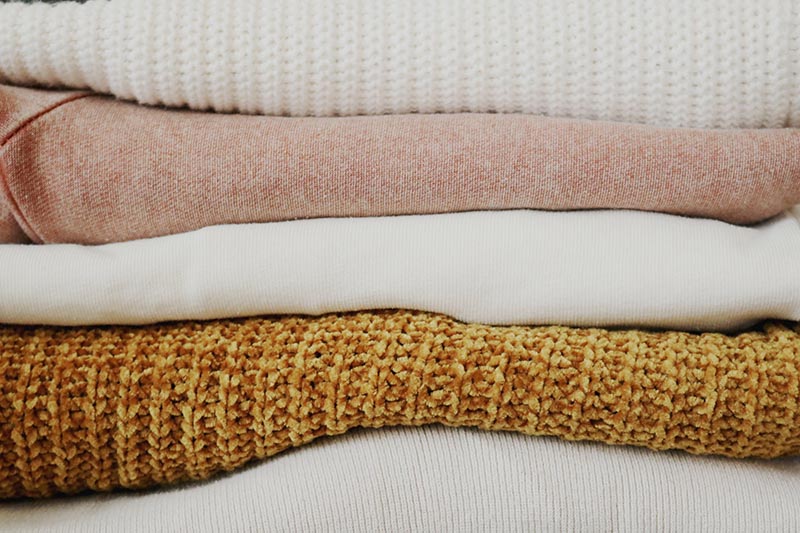What is the best fabric for weighted blankets? What to choose and why?
Weighted blankets are starting to become really popular lately and for a very good reason too – they’re awesome! They offer a plethora of health benefits – they effectively relieve symptoms associated with anxiety, insomnia, PTSD and many many more.
While we created an awesome buying guide, it can be really hard to choose the weighted blanket what works for you, especially without actually touching and feeling the product in person. And, as we all know, the first thing that we touch in a weighted blanket is the fabric that it is made of.
As you might already know, not all materials are created equal and there is a ton of misleading information out there, some even claiming fabrics made of oil is good for you. Ridiculous, right?
So here we go with a list of fabrics that you should definitely look into when choosing your next blanket, a few to definitely avoid and some that actually a reasonable compromise between price and quality.
Let’s take a look:
1. 100% Cotton – Why is it a great choice?
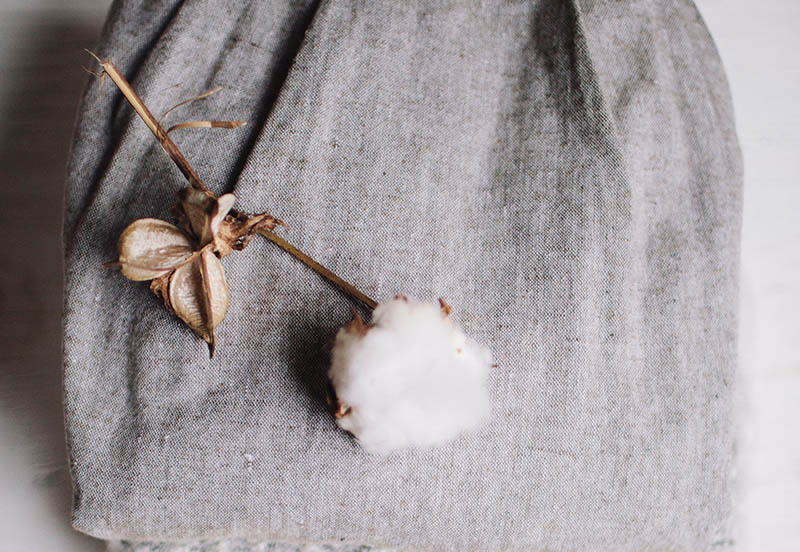
Cotton is easily one of the more popular weighted blanket fabrics that you can choose from. Because of this, it is going to be the most widely available and easiest to find. You will be able to find all kinds of different types of cotton that you can choose from ranging from organic to regular cotton. For organic cotton, you will need to pay more.
The only reason to opt for organic cotton is really for sensitivities to the traditional cotton manufacturing process. If your skin is sensitive, you might want to opt for organic cotton to minimize the chances of experiencing a negative reaction. Cotton is an excellent material to choose for a blanket purely because it is a very breathable material that can be comfortable to sleep in. Some of the other materials you will find on the marketplace are much less breathable, which can cause you discomfort throughout the night.
What Are the Pros Of Cotton?
- Natural and biodegradable
- Easy to wash
- Helps in controlling the temperature
What are the Cons of Cotton?
- Non-organic cotton is known to causes health issues.
- Loses softness after drying on medium-high heat.
2. Wool – what are the pros and cons?
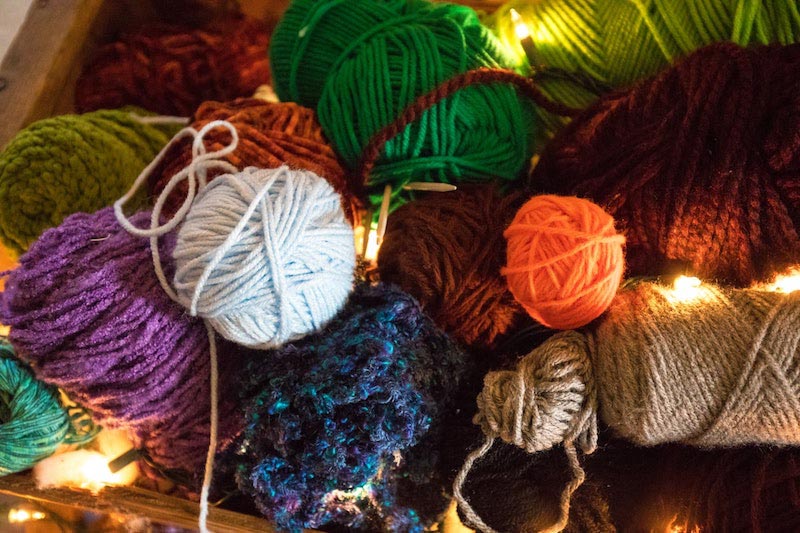
Wool is another reasonably good material that you could look at if you are trying to find the best fabric for a weighted blanket. The good thing that you are getting with wool is a material that is certainly going to help you retain heat, which can help keep you warm during cold winters.
The downside to wool comes from the fact that it can be very uncomfortable to use during warmer months because it offers such excellent insulation. Thus, it can keep you uncomfortably warm throughout the night. It is better to opt for a material that is much more breathable and one that will keep you more relaxed throughout the night to enjoy a good night’s sleep.
Pros of Wool:
- Great for winter and cold weather.
- Offers a unique texture.
Cons of Wool:
- Heat issues, especially in a warm climate
- Original wool blankets can be expensive.
- Sometimes wool can be rough to feel
3. Silk – why some might not like it?
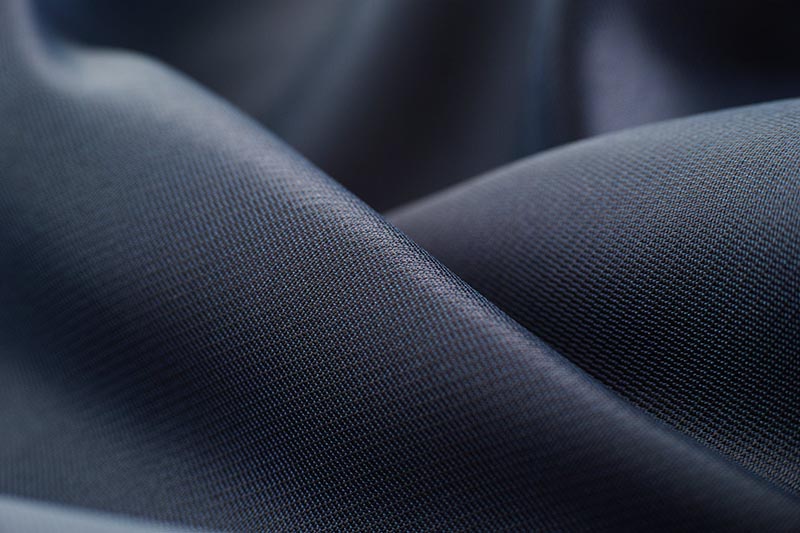
Silk is another popular material choice for various bedding products. If you are looking to find a weighted blanket, you might be thinking about getting one that is made up of silk. Silk is going to be one of the more expensive materials that you can choose from.
The good thing about silk is the fact that it is incredibly comfortable to sleep in. Because silk is so soft to the touch, you will love sleeping on it. Along with this, it is a very breathable fabric which bodes well for a blanket. That being said, it is costly not only to buy but also to maintain as it has to be specially cleaned. Along with this, it is much less durable than the other materials that you have to choose from.
Silk Pros:
- 100% hypoallergenic.
- Great texture
- Luxurious look
- Dust mites proof
- Close to fireproof – it naturally suppresses fire (not that we want to start a fire in the bed but you never know…)
- Mold and mildew resistant
Silk Cons:
- Pricey – natural silk is not cheap
- Heat issues – not a breathable material
- Can’t be easily cleaned – required specialist care
- Silk can fade easily, especially in sunlight
- Not everyone’s cup of tea – lots of people don’t like the shiny look
4. Why is Bamboo the most eco-friendly fabric?
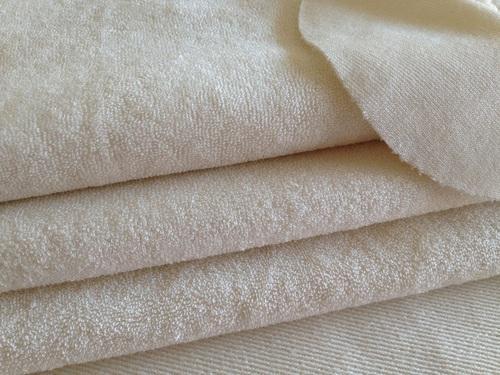
Bamboo is one of the most underrated materials that you can choose for when you are shopping for a weighted blanket or any kind of bedding. Many people might be completely unaware that bamboo is a type of fabric that you can find weighted quilts made out of.
Bamboo offers a lot of advantages as a material for a quilt, including its durability and the fact that it is incredibly soft. With bamboo, you are getting a lot of the advantages of organic cotton. Not only is it hypoallergenic, but it is also extremely breathable, making it an excellent bedding fabric choice.
It is effortless to maintain, and it doesn’t require any specific cleaning methods. Along with this, it is very soft and comfortable to lay on.
Bamboo Fabric Pros:
- Very Soft – Cashmere-like feeling
- Machine washable – very easy to care for
- Bamboo gets softer with each washing – very cool feature
- Absorbs lots of moisture, 3-4 times more than 100% cotton
- Bamboo has antibacterial and antifungal features that appear naturally
- Odor resistant
- Almost renewable source – bamboo grows quickly
Bamboo Cons:
- The fabric can shrink significantly
- Regulation issues – see 3.
- Potential for chemicals use when producing
5. Egyptian Cotton – What makes it so great?
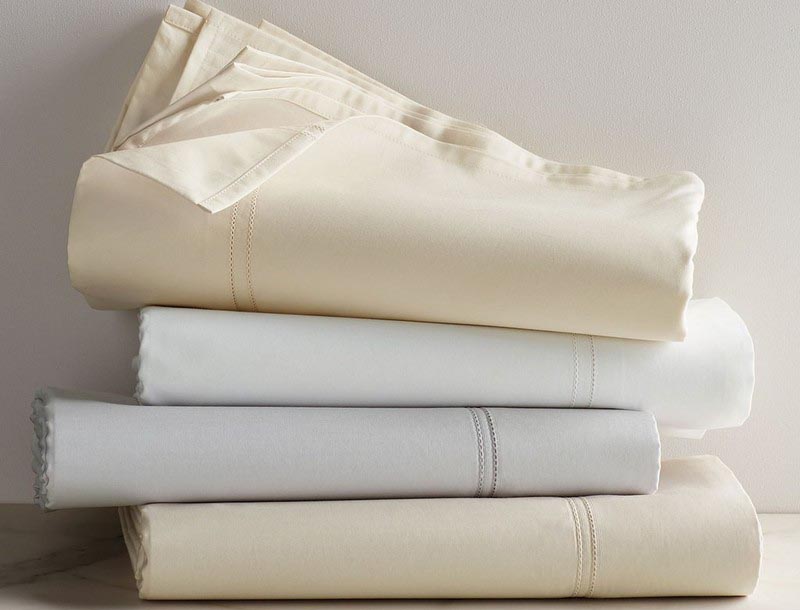
This is another option that you could consider when shopping for a weighted blanket. The good thing about Egyptian cotton has to be the thread count and the fact that the material itself is very soft and luxurious to feel. It’s the ultimate cotton fabric but higher thread counts tend to be very expensive to purchase. The biggest drawback is the high price tag that is associated with it.
Egyptian Cotton Pros:
- It feels great – soft and smooth
- Very comfortable – see 1.
- Very little shrinkage compared to regular cotton
- Lasts a really long time
- Breathable – ideal for all temperature preferences
- Absorbs moisture
- Available in 100% organic products
Egyptian Cotton Cons:
- Quite Expensive to acquire
- Lots of non-genuine Egyptian claims exists
- Easy to wrinkle
6. Flannel – Perfect For Winter
Flannel is going to be a fantastic fabric choice for a quilt if you are looking for a quilt that will only be used in the colder months. If you are going to be using it during the warmer months, you might want to look elsewhere as it retains significant amounts of heat and it can be very uncomfortable and cause night sweating. Flannel is a mix of both cotton and wool.
However, it can be an excellent option for the winter because it does do well at keeping you warm, and it is very easy to maintain.
Flannel Fabric Pros:
- Needs low maintenance.
- Doesn’t need any ironing.
Flannel Cons:
- Catches fire too easily.
- When too fluffy, you may experience discomfort.
7. Minky – Kids love it!
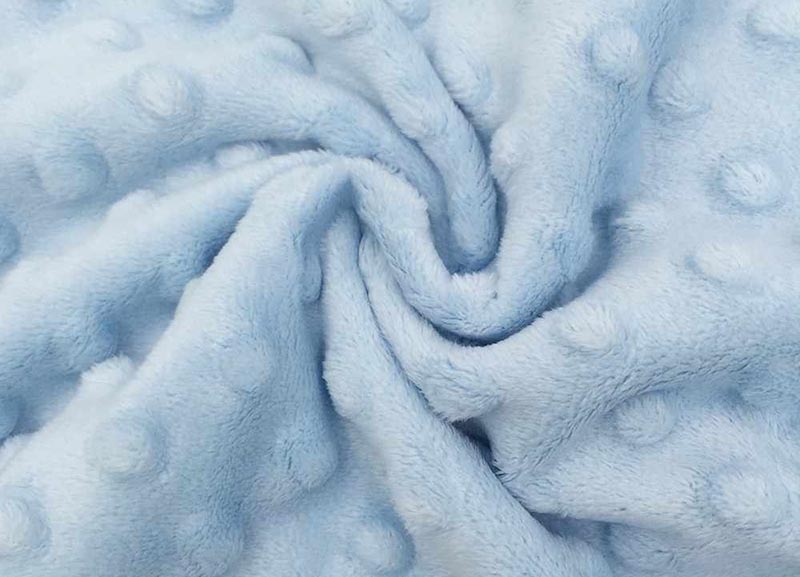
If you are someone that values a material being soft about all, you might be interested in Minky fabric. Minky is one of the best quilt fabrics that you can find anywhere.
Not only is it very durable, but it is incredibly soft, and it is even stain resistant. The unfortunate thing about Minky is the fact that it is also another fabric that is extremely warm, which makes it ideal for winters and non-optimal for summers.
Minky Fabric Pros:
- Comes in various designs.
- Resistant to stains.
- Known to be durable.
Minky Cons:
- Lengthens over time.
- Too hot for summers.
8. Acrylic – Far From Good
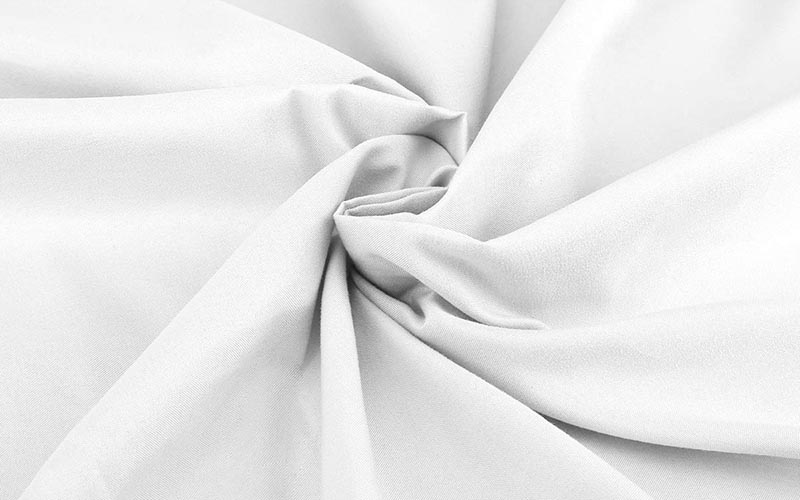
Acrylic is one of those fabrics that are on my “to avoid” list. Since it is a man-made fabric, made of petrol derivates, it doesn’t even get close to anything like cotton in terms of good feel, absorption properties or breathability.
It is basically plastic and can be very toxic to some people – especially those with sensitive skin and certain types of allergies. Also, the technologies that produce acrylic fabrics are very toxic to the environment and lots of chemicals are used in the process.
It doesn’t feel too bad at first, to be honest, but acrylic bedding tends to get rougher and rougher with each wash – it is the main downside of the product. While it is durable and it doesn’t wear out easily, I doubt you’ll want to use it for a long time after you wash it a dozen times in the washing machine. It just doesn’t feel great.
Acrylic Pros:
- VERY durable fabric
- Cheap
- Wrinkle-free
Acrylic Fabric Cons:
- Made of petrol…
- Non-breathable – at all
- You can be allergic to it – huge cons
- It gets rougher with each wash
- Not great for sensitive skin
9. Why stay away from polyester?
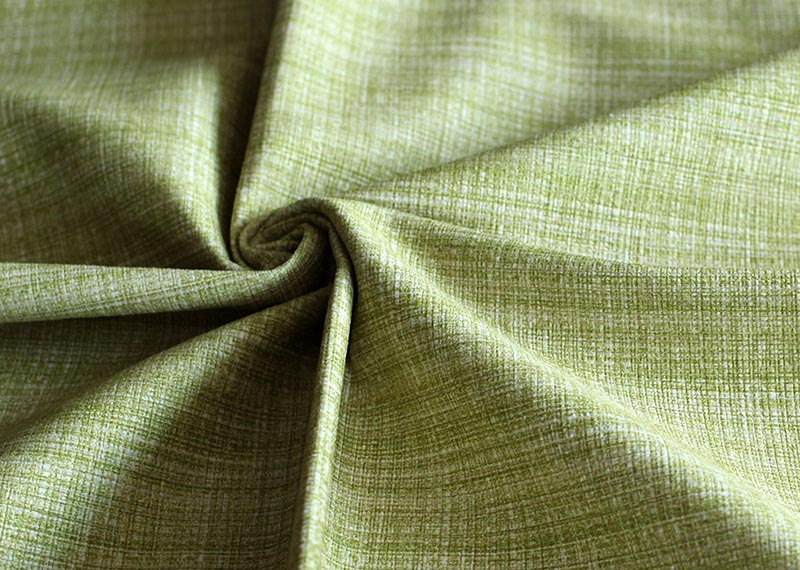
Polyester is the bedding fabric of choice for lots of budget and cheap products and for a reason too – it costs pennies and it offers somewhat reasonable quality for the price. It is a synthetic blend of fibers produced from petrol derivates.
Being plastic/petrol made means it will be toxic to some people’s skins, much like acrylic fabrics. Also, just like acrylic, a lot of harmful chemicals are used in the production of polyester – another reason to not allow it to ever touch your skin, especially if you’re prone to allergies.
Polyester Pros:
- Virtually wrinkle-free material.
- Doesn’t wear out easily – durable
- Cheap
- Colors don’t fade easily
- Doesn’t shrink
Polyester Bedding Cons:
- Not recommended for people with sensitive skin.
- Practically non-breathable
- Like acrylic, it gets rougher with age
- Accumulates static very easily
10. What about Rayon / Viscose?
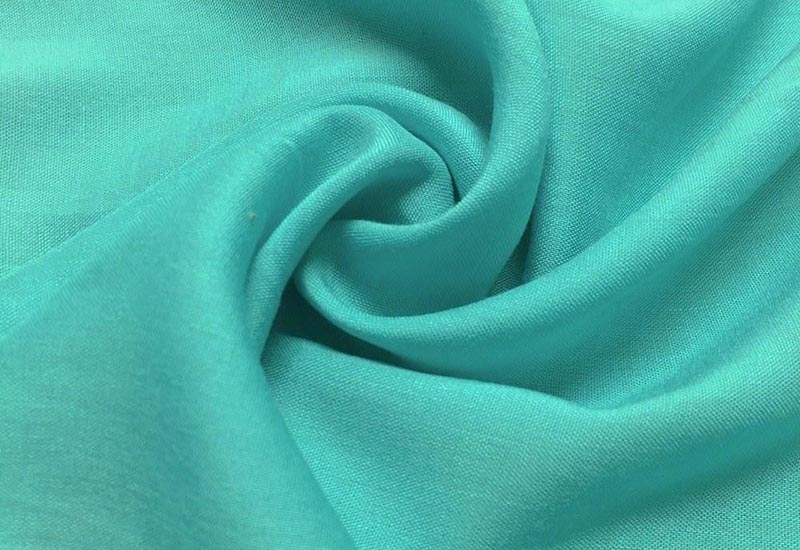
Rayon, which is another name for viscose, is a bit of a unique “beast” – it’s neither fully synthetic nor fully natural. It is made from naturally occurring cellulose fivers but using a technology that pollutes the environment heavily.
Being not 100% natural means it can cause problems to people with sensitive skin and those that are prone to allergies, although the makers of rayon claim that the fabric is hypoallergenic to most. Go figure. I personally don’t recommend it if you have any skin issues or severe allergies to similar fabrics.
The main pros of rayon are that it is relatively cheap to produce and acquire. That’s doesn’t necessarily mean it is a great fabric to use and have in your home. In general, it offers decent breathability – nowhere near cotton or bamboo, but much better than polyester or acrylic.
Rayon is quite absorbent too – pretty much the same as the breathability levels – better than plastics but worse than cotton.
Rayon/Viscose fabrics Pros:
- Comfortable and strong fabric.
- Drapes well.
- Easy to dye and holds color well.
- Rayon is very absorbent
Rayon/Viscose Cons:
- Not recommended for individuals with sensitive skin.
- Rayon doesn’t age well – wears out easily
- Polluting technology
Final Words
I really hope that you got a better idea of what are the best fabrics to choose when looking for your next weighted blanket and the one to definitely avoid.
As we mentioned before, cotton in its variations is by far the top fabric to choose from. If you can afford Egyptian cotton it is probably the most obvious choice if budget is of no concern. 100% cotton is a great choice as well, as usual, but the high thread count and the luxurious feel of the Egyptian products are just miles ahead of the competition.
Minky and flannel are great options for colder, wintery climates or if you’re one of those people who hates cold sheets and you always prefer to go into an already warm-feeling bed.
Silk is a decent choice if you like the look or if you’re stuck in the 90s, mentally and physically. Yes, silk is not for everyone and I think I made that clear in the overview above. It is a durable material that will probably last a lifetime but caring for silk is more troublesome than cotton, for example, so we can’t really justify the price if given the option.
Now let’s take a look at bamboo – it is a superb organic choice for the environment conscious people. It feels great too, it is very easy to care and clean and most of all, it gets better with age. The more you wash bamboo, the better and softer it gets. How cool is that?
Here is a quick video to help you choose better. It isn’t particularly about weighted blankets and their fabric, but bedding sheets fabrics are virtually the same in type and purpose so you can see what works best and what to avoid like the plague:
As we mentioned above, and as seen in the video, try to avoid anything man-made if possible. That includes, but not limited to, acrylic, polyester, and all those artificially produced materials. They’re just not cool. While they last a really long time and they are super cheap to produce and acquire, they’re just not that good. Most of them don’t age well as they get tougher and rougher with each wash.
They also heavily pollute the environment and can be toxic to a lot of people. Lots of people have developed allergies over the years from using petrol and plastics made bedding so if you’re worried about your skin health – avoid plastics in your bed.
I really hope that comparison helped you make an informed choice of what is the best fabric for a weighted blanket – cotton just wins it hands down. If you have any questions or concerns please drop me a line in the comments below. If you spot any typos or inaccuracies in the content please let me know as well!

